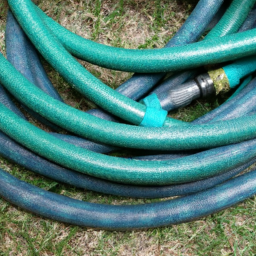Garden Hose GPH How Many
How Many Gph Is A Garden Hose
How Many GPH Is A Garden Hose?
Are you looking to figure out how many gallons per hour (GPH) a standard garden hose can pump? This is a great question, and one that we will strive to answer in this article. We will examine how garden hose flow rates are calculated, how hose diameter affects GPH, and explore what size hose is appropriate for various uses.
Calculating Gardens Hose Flow Rates
To calculate the GPH of a garden hose, you must first understand that flow rates are largely determined by the internal diameter of the hose itself. Generally speaking, the larger a hose's internal diameter, the more GPH it can move. Moreover, GPH is also impacted by the length of the hose, water pressure, elevation, and temperature of the water.
Length of Your Garden Hose
The longer a garden hose is, the fewer GPH it can pump. In other words, if the pipe is extended beyond a certain point, the water flowing inside will become restricted. This is because the water is forced to traverse larger distances, which makes it flow more slowly.
Water Pressure Impact On GPH
Water pressure is another key factor that influences the gallons per hour a garden hose can pump. The higher the water pressure, the more GPH a hose can move. Low pressure can significantly reduce the flow rate of the hose.
Elevation and Temperature of Water
Elevation is also an oft forgotten factor that can impact the GPH of a garden hose. The higher the elevation, the slower the water will move. This is because the gravitational pull is stronger at higher elevations. Similarly, cold water is denser and thus more difficult to move than warm water. This is why garden hoses that are positioned higher up or in cold climates will produce less GPH than hoses situated at lower altitudes or in warmer climates.
Garden Hose Diameter & GPH
The internal diameter of a garden hose is also extremely important when it comes to calculating GPH. Generally, the larger the diameter of a hose, the more GPH it can move. Smaller diameter hoses can still move a surprising amount of water, but in order to move considerable amounts of water, a larger internal diameter is required.
The most common garden hoses measure either 1/2-inch or 5/8-inch in diameter. A 1/2-inch hose can move up to 12 gallons per minute, while a 5/8-inch hose can push up to 18 gallons per minute. This means a 1/2-inch hose can move up to 720 gallons per hour and a 5/8-inch hose can move up to 1,080 gallons per hour.
What Size Garden Hose Should You Use?
When choosing a garden hose, you should consider the end purpose of the hose and the amount of water you will need it to pump. If the garden hose is only being used for light irrigation or general garden use, a 1/2-inch hose should be sufficient. However, if the garden hose is going to be used for heavier-duty irrigation, a 5/8-inch hose should be used.
It is also important to note that certain large-scale gardening applications, such as providing water to an entire farm, will require hoses that have larger internal diameters and more GPH moves.
In Summary
When it comes to determining how many gallons per hour (GPH) a garden hose can pump there are a few factors to consider. GPH is largely determined by the internal diameter of the hose. Generally, the larger the diameter of a hose, the more GPH it can move. The length of the hose, water pressure, elevation, and temperature of the water are also important when calculating GPH.
When selecting a garden hose, it is important to consider the end purpose of the hose and the amount of water you will need it to pump. If the garden hose is only used for light irrigation or general gardening, a 1/2-inch hose should be sufficient. However, for heavier-duty applications a 5/8-inch hose should be used. For particularly large-scale applications, such as providing water to an entire farm, bigger hoses with higher GPH flows may be required.
We hope that this article has given you a better understanding of gardens hose flow rates and how to choose the right hose for your needs.
Sources:
Garden Hose FAQS. (2020, March 4). Retrieved from https://www.homedepot.com/c/ab/garden-hose-faqs/9ba683603be9fa5395fab904aefde08
Hoses and Hose Reels. (2020, March 4). Retrieved from https://www.homedepot.com/c/ab/hoses-and-hose-reels/9ba683603be9fa5395fab9045d8c1982
The Science of Hose Flow. (2020, March 4). Retrieved from https://www.hoseandfittingssource.com/technical-info/the-science-of-hose-flow/

Previous Page
Next Page